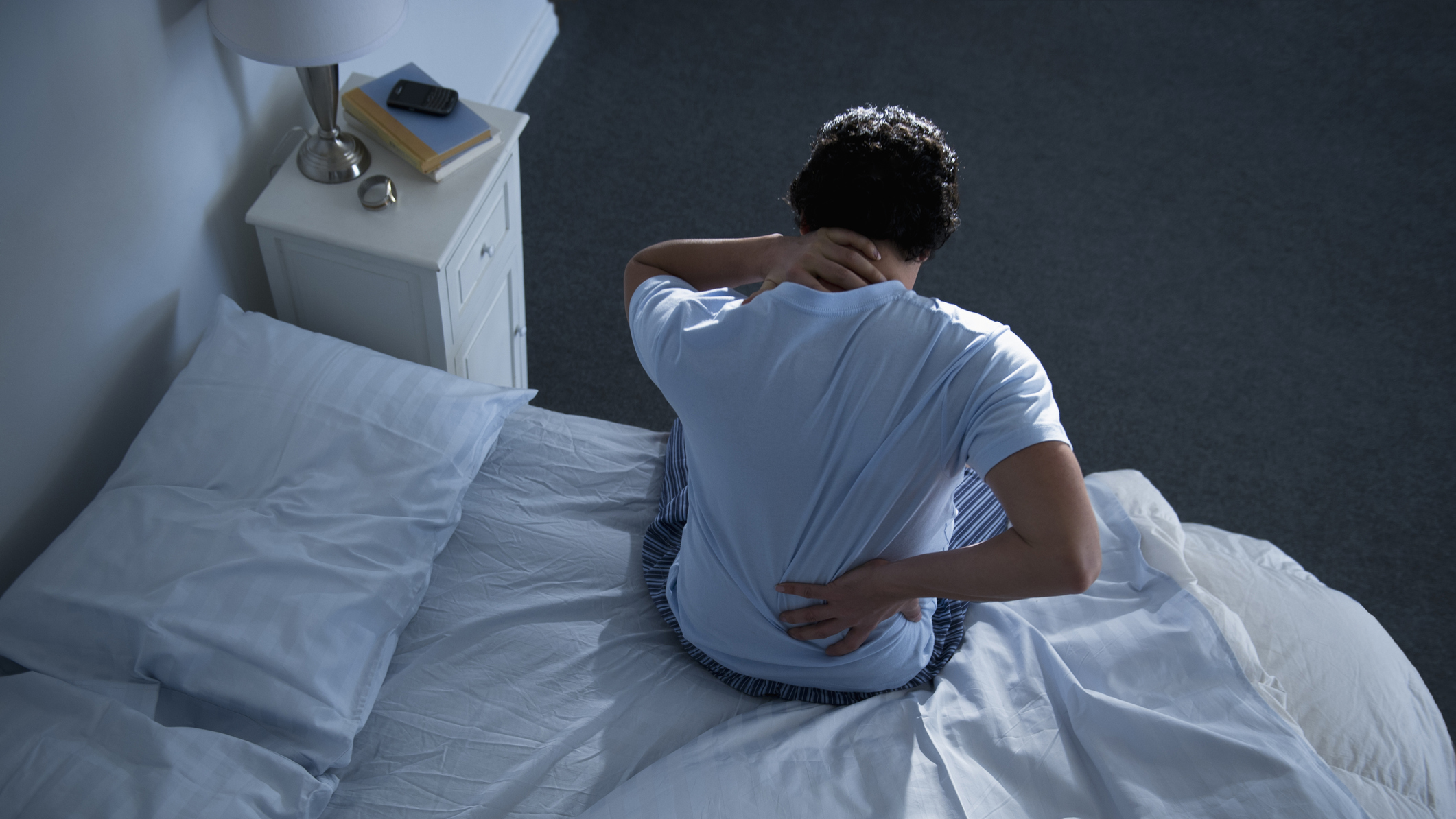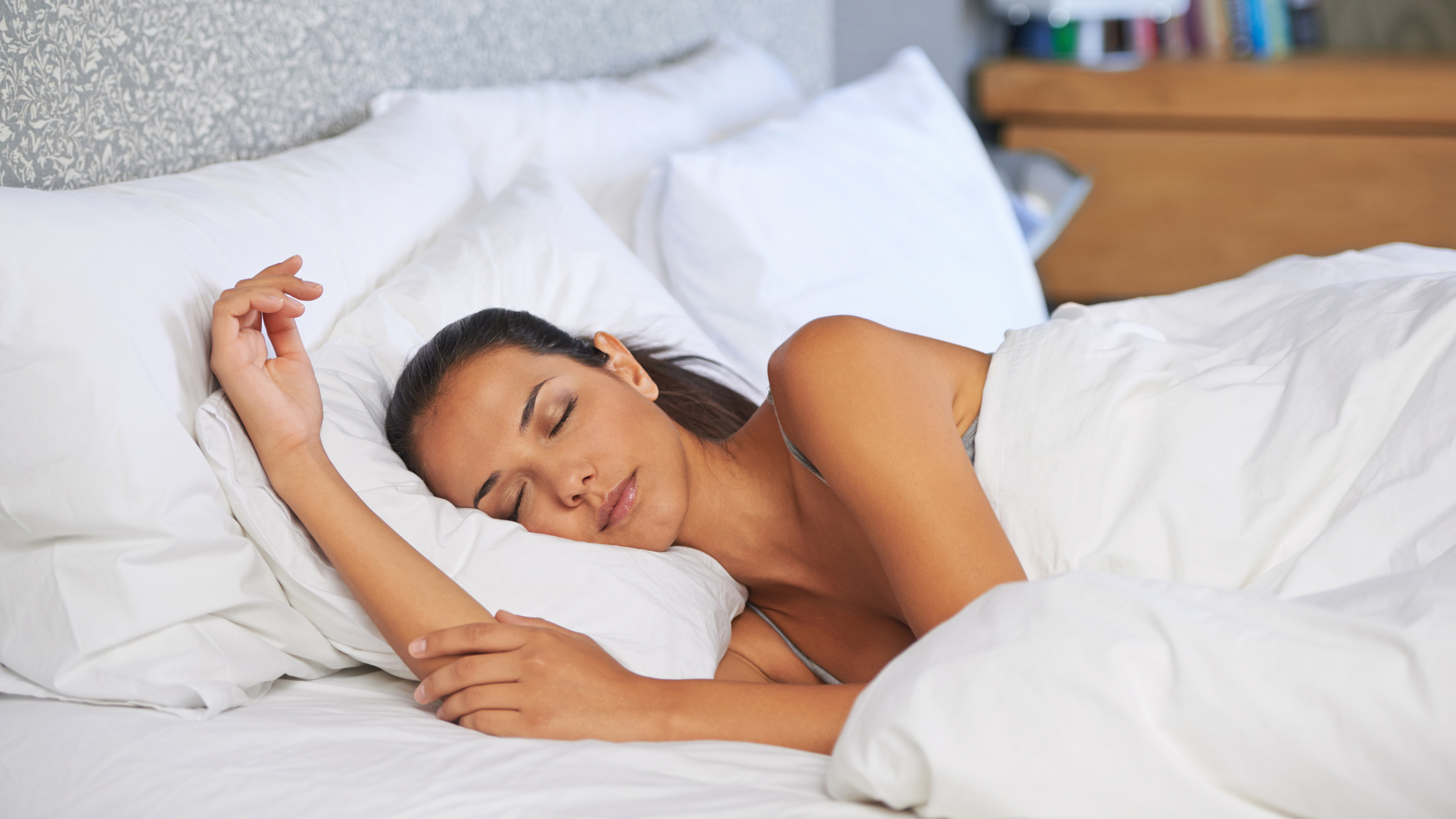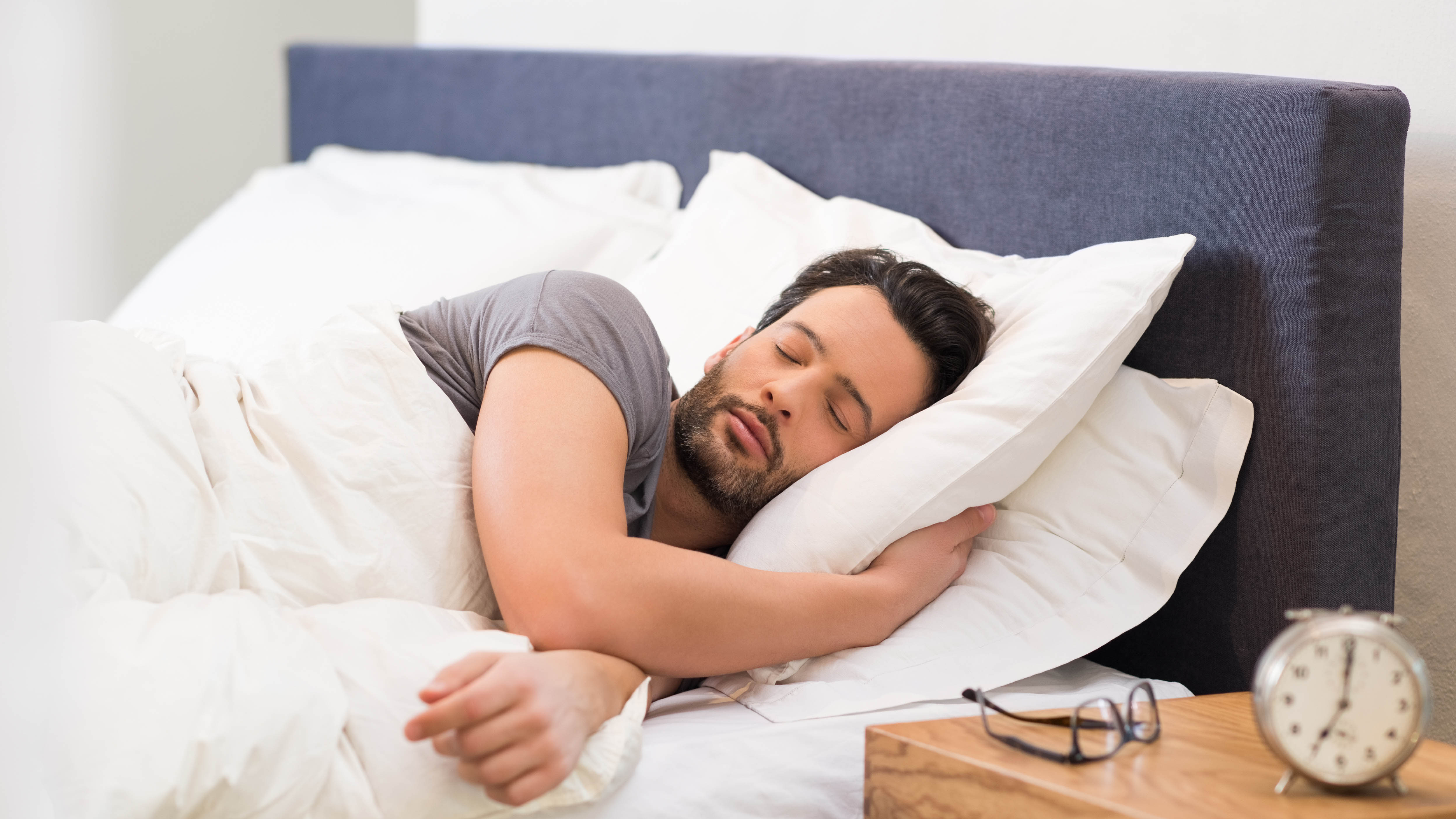This is the best sleep position for back pain, according to an orthopedic surgeon
Plus, a sleep hack to help soothe your ‘tech neck’

In a bid to help us all beat back pain and get a better night’s sleep, a team of orthopedic surgeons have responded to our common back pain questions — including which is the best sleep position for back pain.
Of course, sleeping on the best mattress for back pain will help provide relief from niggling back ailments. But the orthopedic surgeons at NJ Spine & Orthopedic have tackled the most searched for questions surrounding spine health, including how best to find relief from back and neck pain at bedtime.
With Americans spending an average of five hours and twenty five minutes on their phones daily, surgeons are seeing a surge in what is being dubbed as ‘tech neck,’ which occurs when we spend prolonged periods of time in unfavorable positions, putting unnecessary strain on our necks. So, which is the best sleep position for tech neck and back pain? Let’s find out…
Which is the best sleep position for back pain?
Proper posture is crucial when it comes to relieving back pain, and that is especially true during the night, during which we may remain in the same position for upwards of eight hours. Sleeping on the best mattress for back pain, and in the correct position, can make a huge amount of difference to the severity of your back ailment.

According to the orthopedic surgeons at NJ Spine & Orthopedic, the best sleeping position for those with back pain is on your side, also known at the fetal position, with a pillow between your knees. Over 60% of adults opt to sleep on their sides, but adding a pillow between your knees helps to align the hips, which reduces pressure on the lower back.
What’s more, the best mattress for side sleepers will help keep your spine in correct alignment, removing unwanted pressure from your lumbar.
Which is the worst sleep position for back pain?
Anyone who has ever rolled on to their front during the night only to wake a short while later with throbbing pain in their lower back will know that sleeping on your stomach is the worst sleep position for back pain.
Sign up to get the BEST of Tom's Guide direct to your inbox.
Get instant access to breaking news, the hottest reviews, great deals and helpful tips.
The orthopedic surgeons at NJ Spine & Orthopedics reveal that sleeping on your stomach can worsen back pain, as this position puts additional strain on the natural curvature of the spine, which can cause the lower back to dip out of alignment. However, if you struggle to get comfortable in any other position, investing in the best mattress for stomach sleepers will help mitigate any ill-effects of sleeping on your front.
Which is the best sleep position for neck pain?
Online search surrounding ‘tech neck’ has increased by 245% since 2004, due to more of us spending an increased amount of time peering down into our phones and laptops — which puts our necks and upper backs under additional strain.
Tech neck can lead to immediate pain, stiffness, and discomfort in the short term, but can also cause headaches, lower back pain, and even herniated discs in the long term.

While cutting down on your screen time and improving your posture is crucial, so too is the position that you sleep in. The experts at NJ Spine & Orthopedics advice sleeping on the opposite side that you usually do in order to relieve the pressure that may be contributing to your neck pain. It’s also important to invest in the best pillow according for your sleep style, to ensure that your neck is cradled in the correct position and not placed under any additional strain.
Can a mattress cause back pain?
The mattress that you sleep on can potentially soothe or aggravate existing back ailments, while an unsupportive or old mattress can even cause back pain. If your back pain is much worse upon waking, there's a strong chance that your mattress is to blame.
More obvious signs include visible sagging and sleeping on a mattress that's too hard or soft to properly support you. If firmness (or lack thereof) is the issue, adding a mattress topper can provide an instant upgrade if your current mattress is in otherwise fine shape.
We go into more detail in our feature explaining why some mattresses can cause aches and pains, which also provides additional tips for finding a new bed with proper spinal support so you can avoid nights of uncomfortable sleep.

Nicola is the Sleep Editor at Tom’s Guide, where she helps steer the mattress and sleep content published on Tom’s Guide, including our Best Mattress for Back Pain buying guide. With a career in journalism spanning the best part of two decades, Nicola brings experience to the team and the knowledge of what makes a great article, whether that’s a how-to mattress cleaning feature, a deep dive into melatonin gummies, or an in-depth mattress review. As a sleep editor, few better understand how important a decent mattress is to the overall quality of our sleep, and precisely how our sleep impacts our physical and mental health. As well as tackling the vast topic of sleep, Nicola joins the raft of expert mattress specialists at Tom’s Guide, who test and compare a wide range of mattresses in order to guide readers towards the very best options on the market.
